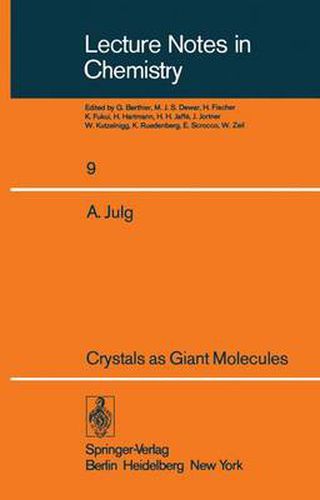Readings Newsletter
Become a Readings Member to make your shopping experience even easier.
Sign in or sign up for free!
You’re not far away from qualifying for FREE standard shipping within Australia
You’ve qualified for FREE standard shipping within Australia
The cart is loading…






This title is printed to order. This book may have been self-published. If so, we cannot guarantee the quality of the content. In the main most books will have gone through the editing process however some may not. We therefore suggest that you be aware of this before ordering this book. If in doubt check either the author or publisher’s details as we are unable to accept any returns unless they are faulty. Please contact us if you have any questions.
Traditionally, when one deals with crystals, the first property to be presented is the periodicity of the lattice, and all methods of study are based on this characteristic, which is considered essential. In fact, crystals differ from the molecules of finite size that are studied in chemistry, only in their extremely large number of particles. Furthermore, the existence of faces, which limit the spread of crystals in space, necessarily breaks the periodicity of the system. For these reasons it is natural to apply to crystals the concepts and methods that have been widely tested in the study of molecules. Pauling first emphasized this point 1 and used it to explain the electronic structure of crystals, thought to be infinite and perfect. The aim of this work is to show, with the help of a few examples, the possibilities offered by quantum chemistry for tackling the problems of crystal electronic structure, of crystallographic arrangements as well as their macroscopic shape, and of distortion effects caused by the presence of faces. The area related to the existence of energy bands (allowed or forbidden), gap, electric, magnetic or optical properties will not be touched upon.
$9.00 standard shipping within Australia
FREE standard shipping within Australia for orders over $100.00
Express & International shipping calculated at checkout
This title is printed to order. This book may have been self-published. If so, we cannot guarantee the quality of the content. In the main most books will have gone through the editing process however some may not. We therefore suggest that you be aware of this before ordering this book. If in doubt check either the author or publisher’s details as we are unable to accept any returns unless they are faulty. Please contact us if you have any questions.
Traditionally, when one deals with crystals, the first property to be presented is the periodicity of the lattice, and all methods of study are based on this characteristic, which is considered essential. In fact, crystals differ from the molecules of finite size that are studied in chemistry, only in their extremely large number of particles. Furthermore, the existence of faces, which limit the spread of crystals in space, necessarily breaks the periodicity of the system. For these reasons it is natural to apply to crystals the concepts and methods that have been widely tested in the study of molecules. Pauling first emphasized this point 1 and used it to explain the electronic structure of crystals, thought to be infinite and perfect. The aim of this work is to show, with the help of a few examples, the possibilities offered by quantum chemistry for tackling the problems of crystal electronic structure, of crystallographic arrangements as well as their macroscopic shape, and of distortion effects caused by the presence of faces. The area related to the existence of energy bands (allowed or forbidden), gap, electric, magnetic or optical properties will not be touched upon.